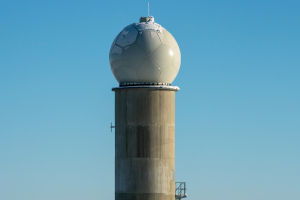Stretching across the tranquil waters of the Tagus River, the Vasco da Gama Bridge in Lisbon, Portugal, is a spectacular feat of modern engineering.
Named after the famous Portuguese explorer Vasco da Gama, this bridge is a symbol of Portugal's connection between the past and the future.
Spanning over 12.3 kilometers (7.6 miles), it is the longest bridge in Europe and serves as a vital link between Lisbon and the southern parts of Portugal.
How to Reach the Vasco da Gama Bridge
By Car:
The Vasco da Gama Bridge connects the northern and southern banks of the Tagus River. If you're driving from central Lisbon, head east on the A12 motorway, which directly crosses the bridge. The drive offers spectacular views of the river and the city skyline.
By Public Transport:
Although the bridge is primarily for vehicles, you can reach the nearby areas by public transport. Take a train from Lisbon's Oriente Station to Montijo and cross the river by ferry. From there, you can enjoy a closer look at the bridge.
Why Was the Vasco da Gama Bridge Built?
1. Addressing Traffic Congestion
Before the bridge was completed in 1998, the 25th of April Bridge (Ponte 25 de Abril) was the primary link between Lisbon and the southern regions. As traffic volumes increased, it became clear that another route was needed to reduce congestion and accommodate the growing number of commuters and tourists. The Vasco da Gama Bridge was conceived to alleviate this pressure, providing an additional crossing over the Tagus River.
2. Preparing for Expo 98
The bridge was inaugurated just in time for Expo 98, a world's fair held in Lisbon to commemorate the 500th anniversary of Vasco da Gama’s discovery of the sea route to India. The event attracted millions of visitors, and the bridge played a crucial role in managing the increased traffic, enhancing access to the expo site and supporting the development of Lisbon’s eastern districts.
What Makes the Vasco da Gama Bridge So Impressive?
1. A Marvel of Modern Engineering
The Vasco da Gama Bridge stands out not just for its length, but for its remarkable construction. Built to withstand earthquakes up to 4.5 times stronger than the catastrophic 1755 Lisbon earthquake, the bridge incorporates multiple spans, including a central cable-stayed span that reaches 420 meters (1,378 feet). The use of high-performance concrete and innovative construction techniques ensures the bridge's durability against the test of time and natural elements.
2. A Blend of Function and Aesthetics
While primarily functional, the Vasco da Gama Bridge is also a striking visual landmark. Its sleek design, featuring a series of elegant pylons and suspension cables, creates a seamless connection between land and water. At night, the bridge is illuminated with a series of lights that highlight its architectural beauty, making it a captivating sight for locals and visitors alike.
3. An Eco-Friendly Initiative
The construction of the bridge took into account the environmental impact on the surrounding areas, particularly the Tagus Estuary Natural Reserve. Efforts were made to minimize disruption to local wildlife and vegetation. The bridge’s design included measures to protect the estuary’s delicate ecosystem, reflecting a commitment to sustainable development.
Dining with a View of the Bridge
For those who want to dine with a view of the Vasco da Gama Bridge, Lisbon offers several great options:
1. Páteo de Lisboa – Located on the riverfront, this restaurant offers traditional Portuguese cuisine with a contemporary twist. Prices range from €15 to €30 per person.
2. The Time Out Market – A bustling food hall located near Cais do Sodré, offers a variety of options, from seafood to international dishes, and provides a vibrant dining experience. Prices vary widely but generally range from €10 to €25 per person.
3. Casa do Bacalhau – Specializing in dishes made with Portugal's iconic codfish, this charming restaurant near the bridge serves delicious food in a rustic atmosphere. Prices range from €20 to €35 per person.
Why Visit the Vasco da Gama Bridge?
1. A Drive with Stunning Views
Driving across the Vasco da Gama Bridge offers breathtaking views of the Tagus River and the Lisbon skyline. It's a unique experience that allows you to appreciate the scale and beauty of this modern architectural wonder.
2. A Gateway to Lisbon’s Modern Side
The bridge provides easy access to Parque das Nações, a redeveloped district that is now a hub of contemporary architecture, leisure activities, and cultural attractions. Here, you can visit the Lisbon Oceanarium, the Vasco da Gama Tower, and the bustling shopping malls, all within minutes of the bridge.
3. An Icon of Portuguese Ingenuity
The Vasco da Gama Bridge is not just a functional piece of infrastructure; it is a symbol of Portugal’s innovation and ability to connect its rich history with its modern aspirations. It's a testament to Portuguese engineering and a must-see for anyone interested in architecture and design.
Whether you're an architecture enthusiast, a road trip lover, or simply looking to explore Lisbon from a new perspective, the Vasco da Gama Bridge offers a unique experience that shouldn't be missed. As you cross this remarkable bridge, you'll not only be moving between two points on the map but also between Portugal's storied past and its vibrant future.


